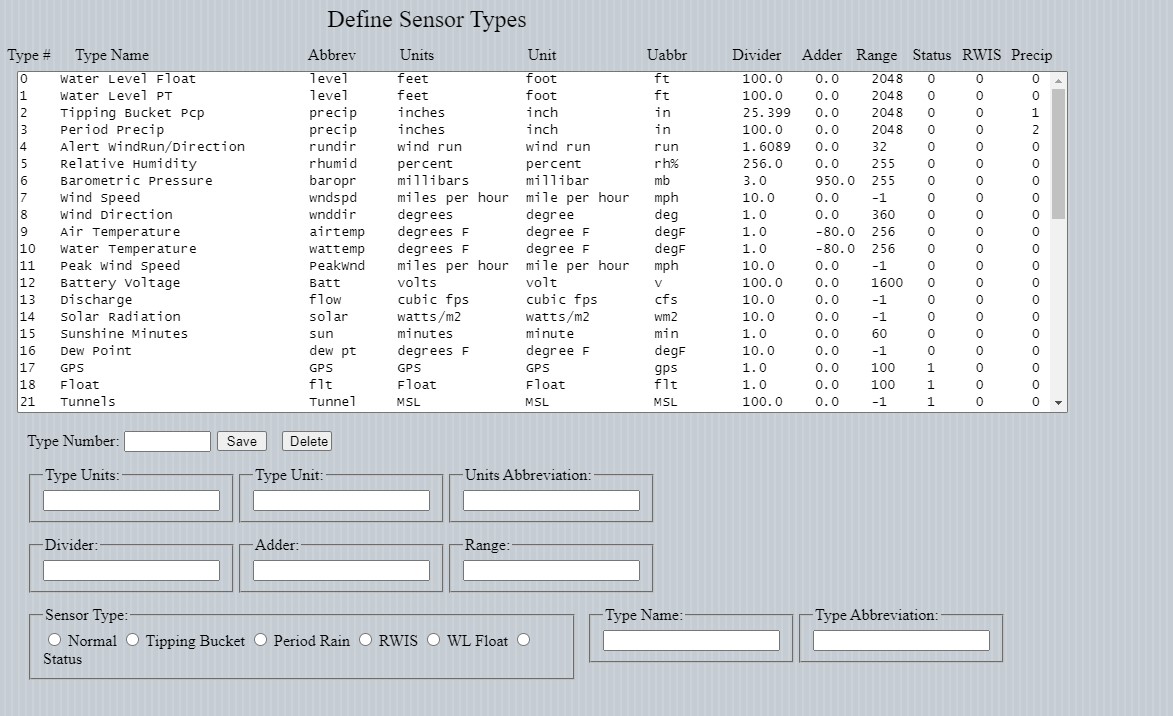Defining New Sensor Types
The way a sensor is defined is important as it determines how the data for that sensor is interpreted and displayed.
Additional sensor types can be defined, however, by selecting "Sensor Types" from the "Configure" drop-down menu
The screen shown below will be displayed in a new tab.

Sensor types display / definition screen
This dialog displays all defined sensor types plus it allows for the addition of new types and editing of existing types. The parameters that define a sensor type number are:
The type number (from 0 to 9999)
The default type name
The default type abbreviation
The default units of measurement
The default unit of measurement
The default abbreviated units of measurement
The default divider for converting data received in raw format to engineering units
The default adder for converting data received in raw format to engineering units
The default raw range of values for sensors that report in raw format
A flag indicating if the sensor is a status device (1 if yes, 0 if no)
A flag indicating if the sensor is an RWIS sensor where data is to be display as words and not a numeric value (e.g., Ice, Wet, etc.)
A flag indicating whether a sensor is a rain gauge (0 for no, 1 for an accumulating rain gauge / tipping bucket, 2 for period rainfall values)
To edit an existing type number, click on the type number to edit, modify the values in the text fields and radio buttons accordingly, then click the "Save" button.
To add a new type number, enter an unused type number in the "Type Number" edit field. Fill in the desired values in the text fields, check the appropriate radio button in the "Sensor Type" area and then click "Save". Sensor types are defined as follows:
Normal ... the most common sensor type where values go smoothly up and down. Typical is a temperature sensor.
Tipping bucket ... a rain gauge where values increment (count up) until they reach some upper limit, then reset to zero.
Period rain ... a rain gauge that reports rainfall values that occurred during a period of time, say 15-minutes.
RWIS ... sensors where data is to be display as words and not a numeric value.
WL Float ... a type of water level sensor with a chain over a wheel and on one end of the chain is a float and on the other a weight.
Status ... a sensor that reports the status of some equipment. For example, whether a motor is on or off.
